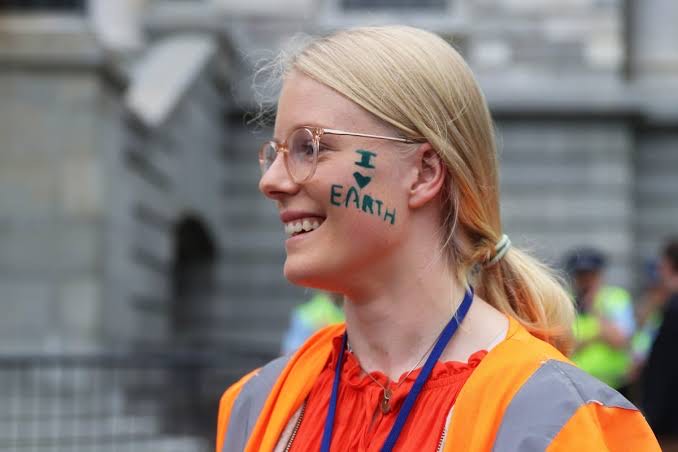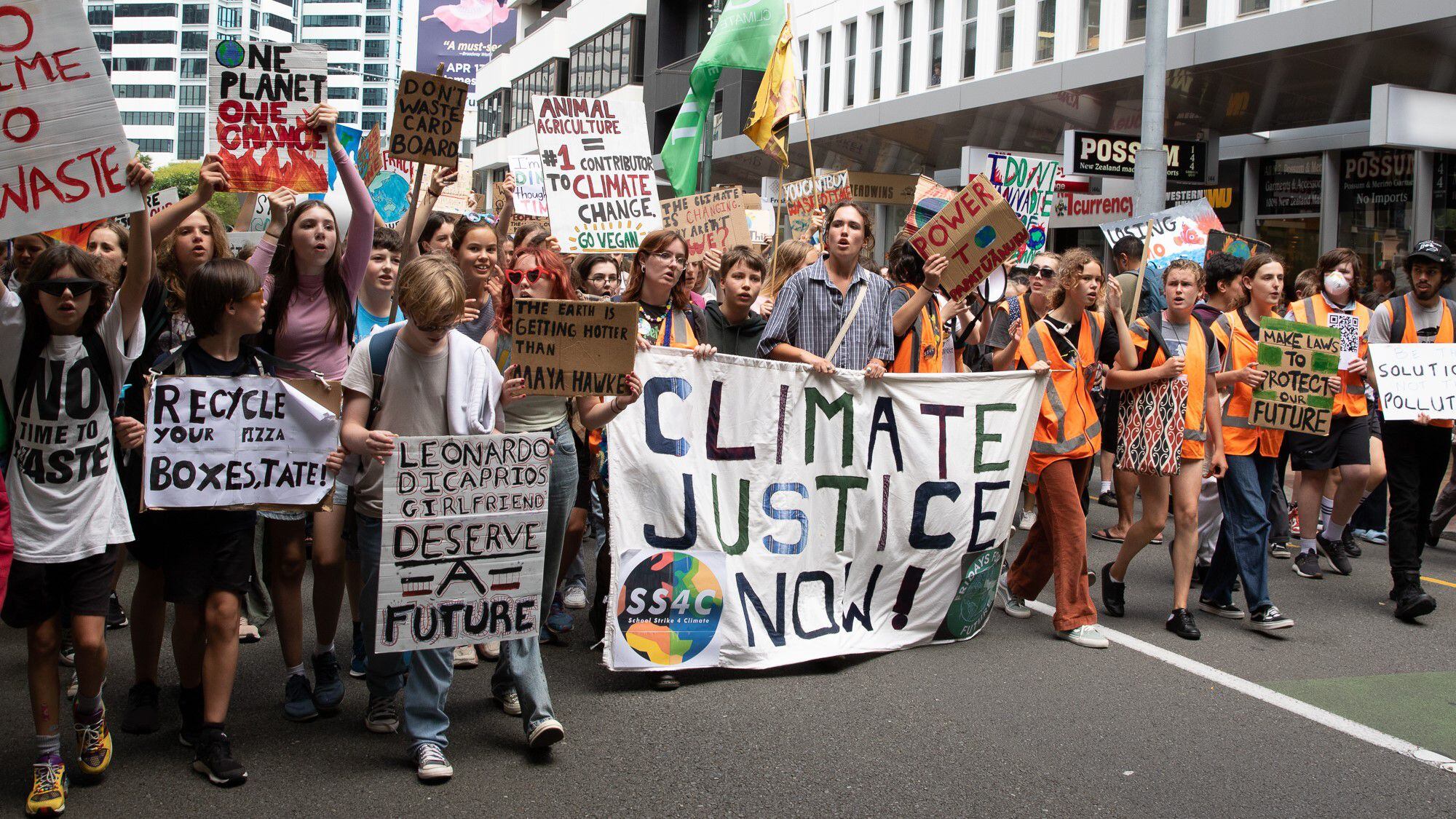Sophie Handford is an activist and politician chairing the Strategy, Operations & Finance Committee of the Kāpiti Coast District Council. In 2019, she founded School Strike 4 Climate in Aotearoa NZ and went on to coordinate the movement which mobilised 170,000 people across the country united for climate justice.
Top Header Image: A large crowd of School Strike 4 Climate protesters in Wellington. (Source: 1News)
In the heart of Aotearoa, a movement is taking root, one that transcends generations and promises to help in shaping the future of our planet. Recloaking Papatūānuku, the act of restoring and regenerating our native landscapes, isn’t just an environmental initiative, it’s a call to action.
As we confront the profound challenges of climate change, dwindling biodiversity and rising atmospheric CO2 levels, Recloaking Papatūānuku is an important part of the solution.
The decisions we make today are not just a matter of policy or economics, they are a legacy that we, the youth, will inherit. Our generation will live with the consequences of the actions taken, or not taken, by our predecessors. This is why the concept of Recloaking Papatūānuku, alongside urgently reducing greenhouse gas (GHG) emissions, holds such significance for us as the youth of today. It is a call to reevaluate our relationship with the environment and to take collective responsibility for safeguarding the future. We need cause for hope, and to see our leaders actually leading.
At its core, Recloaking Papatūānuku is all about restoring the Ngahere of Aotearoa, about reconnecting with our land in a way that is regenerative and sustainable. This isn’t merely an environmental endeavour, it’s a strategy that encompasses multiple facets of our existence. By planting native trees and other native vegetation, we not only draw down atmospheric CO2, but we also build resilience in our landscapes and restore homes for the multitude of beautiful creatures we share this place with.
”Recloaking Papatūānuku is a crucial piece of the puzzle, but it is only one part of the solution. It cannot succeed in isolation.
Climate change has brought about unpredictable weather patterns, rising temperatures, and increased risks of natural disasters like Cyclone Gabrielle. By recloaking our land with native forests and wetlands, we are creating a natural defense system. Trees and other native plants act as buffers against floods, landslides, and wildfires. They stabilise soil, prevent erosion, and purify our waterways. In essence, Recloaking Papatūānuku strengthens our landscape, making it more resilient in the face of climate-related challenges, as long as we’re planting the right tree in the right places.
However, the impact of Recloaking Papatūānuku goes beyond climate resilience. Our unique native flora and fauna have evolved over millennia to coexist harmoniously, forming intricate ecosystems that support life in Aotearoa. The loss of biodiversity is not just an ecological concern; it threatens our cultural heritage and the very essence of what it means to be a New Zealander. By recloaking Papatūānuku, we are not only reforesting, we are restoring the balance of nature. We are creating havens for native species, from the smallest insects to the majestic kākāpō, allowing them to thrive once more.
But we must be clear; Recloaking Papatūānuku is not a one-dimensional task. It is a complex mission that requires a holistic approach.

©Sophie Handford
While carbon removal and offsetting strategies, like Recloaking Papatūānuku, are important components of our climate action plan, they should not serve as a smokescreen for delaying the necessary and immediate reductions in GHG emissions that are urgently required. We must hold decision-makers accountable to ensure that the net-zero targets made are not used as excuses for inaction in the present, or are not fully reliant on sequestration schemes without genuine emissions reductions. Instead, Recloaking Papatūānuku should be seen as a commitment to taking the bold and necessary action to respond to the climate crisis, restoring the health of our planet for future generations, in tandem with meaningful reductions in GHG emissions.
We must transition to renewable energy sources, farm less intensively, enable sustainable transportation in the form of both active and public transport, and embrace a circular economy. Recloaking Papatūānuku is a crucial piece of the puzzle, but it is only one part of the solution. It cannot succeed in isolation.
This work must be a collaborative effort across generations. It’s about bridging the gap between the wisdom of our elders and the innovation of our youth. We must also learn, and take leadership from, indigenous knowledge and practices. The urgency of the climate crisis demands that we work together, with respect for the past and a vision for the future. Our actions must stand the test of time, creating a legacy of stewardship and sustainability.
This article was also published on The Press and printed the Sunday Star Times.




Leave a comment